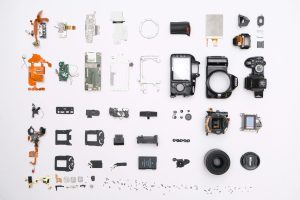Inside Look: The Miniature Engineering of Modern Drones
Welcome to the world of modern drones. These incredible flying machines have become increasingly popular in recent years, with applications ranging from photography and videography to military operations and delivery services. However, what many people may not know is the intricate engineering that goes into creating these small but powerful devices. In this article, we’ll take a closer look at the miniature engineering of modern drones, exploring the technology behind their flight and the innovations that continue to propel this industry forward.
The Basics of Drone Engineering
In order to understand the miniature engineering of modern drones, it’s important to first grasp the basics of how these devices work. At its core, a drone is a remote-controlled aircraft equipped with electronic sensors and cameras, along with a propulsion system to achieve flight. The engineering behind drones primarily involves designing and integrating these elements to create a stable and functional flying machine.
The first step in drone engineering is designing the body or frame of the device. This can range from lightweight materials like carbon fiber to more durable options like aluminum or plastic. The shape of the body also plays a crucial role in the aerodynamics of the drone, with many models sporting a sleek and streamlined design.
The next key component is the flight controller. This is the brain of the drone, responsible for receiving and analyzing data from the various sensors on the device and making adjustments to maintain stability and control. Without a reliable flight controller, a drone would be virtually impossible to fly.
The Power Behind Drone Flight
Batteries and Motors
One of the most critical aspects of drone engineering is powering the device. Most drones are powered by rechargeable lithium-ion batteries, which provide the necessary energy to keep them airborne. However, balancing the weight and size of the battery with the desired flight time can be a challenging task for engineers.
The motors and propellers on a drone are responsible for generating the thrust necessary to achieve lift and control the device’s movement. Modern drones are equipped with brushless motors, which are more efficient and reliable compared to their brushed counterparts. The placement and size of these motors also play a crucial role in achieving optimal flight performance.
Sensors and Navigation Systems
In order to maintain stability and prevent crashes, drones are equipped with a variety of sensors and navigation systems. These include gyroscopes, accelerometers, barometric sensors, and GPS modules. These sensors allow the flight controller to gather real-time data on the drone’s position, altitude, speed, and more, allowing it to make the necessary adjustments for a smooth flight.
Innovations in Drone Engineering
The field of drone engineering is constantly evolving, with new innovations being introduced regularly. One of the most exciting developments is in the use of artificial intelligence (AI) and machine learning. Some drones are now equipped with AI algorithms that allow them to perform tasks autonomously, such as identifying and tracking objects or mapping a specific area.
Another significant development is the use of 3D printing technology in drone manufacturing. This allows for faster and more customizable production of drone components, reducing the time and cost required for assembly. Engineers are also exploring new lightweight materials and designs to create drones that are smaller and more agile without sacrificing power.
Conclusion
The engineering behind modern drones may be miniature, but its impact is certainly not. These incredible flying machines have revolutionized many industries and continue to push the boundaries of what is possible. From the materials used in their frames to the technology behind their flight, every aspect of a drone’s design is essential to its functionality. As we continue to see advancements in drone engineering, one thing is for sure – these fascinating devices are here to stay.










